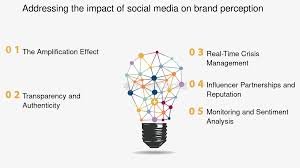In the modern marketing landscape, social media has become an indispensable tool for businesses. Companies no longer solely rely on traditional advertising methods; they now turn to platforms like Instagram, Facebook, Twitter, and YouTube to engage with consumers, promote products, and build brand loyalty. The impact of social media on consumer behavior is undeniable, influencing purchasing decisions, brand perceptions, and even the way people interact with products.
1. Social Media as a Marketing Powerhouse
Social media provides a platform where brands can directly connect with consumers, creating a more personalized marketing experience. With billions of users worldwide, platforms like Instagram and Facebook offer businesses unparalleled access to target audiences. Through highly refined advertising tools, companies can segment their target market based on demographics, interests, and behaviors, ensuring that their messages reach the right people.
Moreover, social media allows for real-time feedback, where businesses can engage with customers immediately. Brands can run polls, respond to customer queries, and address concerns, fostering a sense of community and trust. This direct communication channel helps businesses develop closer relationships with consumers, leading to greater brand loyalty and customer satisfaction.
2. Influencer Marketing: The New Face of Advertising
One of the most significant shifts in consumer behavior driven by social media is the rise of influencer marketing. Influencers—individuals with large followings on social media platforms—have become a powerful force in the world of advertising. These influencers can range from celebrities to everyday people who have gained a loyal audience by sharing content that resonates with their followers.
The appeal of influencer marketing lies in its authenticity. Consumers tend to trust influencers more than traditional advertisements because they feel a personal connection to them. A recommendation from an influencer can feel like a trusted piece of advice from a friend, rather than a sales pitch. Brands that collaborate with influencers benefit from this trust, as their products are often seen as more credible and desirable.
3. Social Media and Impulse Buying
Social media platforms are designed to be visually stimulating and engaging, making them ideal environments for driving impulse buying. The constant stream of images, videos, and advertisements creates a sense of urgency that can trigger spontaneous purchasing decisions. Platforms like Instagram and Pinterest use eye-catching visuals to promote products, and the “swipe-up” feature allows users to make purchases instantly without ever leaving the app.
Moreover, social media often generates a sense of FOMO (fear of missing out), especially when influencers or brands promote limited-time offers or exclusive products. This sense of urgency can push consumers to buy things they may not have considered otherwise, driving impulse purchases.
4. The Power of User-Generated Content
User-generated content (UGC) is another way social media influences consumer behavior. UGC refers to any content, such as photos, videos, or reviews, created by consumers themselves that showcases a product or brand. Brands often encourage customers to share their experiences with products, whether by posting pictures or using branded hashtags.
This type of content is valuable because it offers social proof—a powerful motivator for purchasing decisions. When potential buyers see real people using and enjoying a product, it builds trust and increases the likelihood of conversion. UGC is particularly effective on visual platforms like Instagram and TikTok, where consumers are drawn to authentic, relatable content that showcases a product in action.
5. Social Media’s Role in Brand Perception
Social media plays a crucial role in shaping how consumers perceive brands. The way a brand presents itself on social media can influence how it is viewed by its audience. For example, a brand that maintains a consistent, engaging presence on social media and interacts with customers in a positive way is more likely to be seen as trustworthy and customer-centric.
On the other hand, a brand that fails to respond to customer complaints or has a negative social media presence can suffer long-term damage to its reputation. Social media also allows consumers to share their experiences, both positive and negative, with a global audience, which can have a significant impact on a brand’s image.
6. The Future of Social Media and Consumer Behavior
The future of social media and its impact on consumer behavior is still evolving. As platforms introduce new features like augmented reality (AR) shopping and live-streamed product launches, the opportunities for businesses to engage with consumers will continue to expand. Social media is also likely to become even more integrated with e-commerce, allowing users to make purchases without ever leaving their favorite platforms.
For businesses, understanding how social media shapes consumer behavior will be crucial for staying competitive. Brands must adapt to changing trends, continuously engage with their audience, and offer valuable, relevant content to maintain consumer interest.
In conclusion, social media has fundamentally altered the way consumers make purchasing decisions. Through influencer marketing, real-time engagement, and user-generated content, businesses can create powerful connections with their audiences. As social media continues to evolve, it will undoubtedly have an even greater influence on consumer behavior, shaping how people shop, interact with brands, and perceive products in the digital age.

Leave a Reply